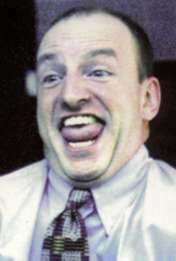 |  | |||||||
| When Steven Soderbergh one the Palme D'Or for his debut, Sex Lies and Videotape, he joked that 'it's only downhill from here'. The fact that he was, at 26, the same age Orson Welles shot Citizen Kane only added to the expectations resting on him. And in many ways, his 1989 prediction came unpleasantly true in that his next five films bombed at the box office, and were met less favourably with the critics. The fiendishly dark and officiously comic Kafka (1991) was such a dramatic departure from his debut feature that critics dismissed it as pretentious. His next feature, King of the Hill (1993), a highly accessible coming-of-age drama told through whisky-coloured filters was again attacked as sentimental and trite. During The Underneath (1995), which Soderbergh considers his worst film, he almost decided to give up film making altogether. Instead he turned to much smaller projects, and shot the brilliant Gray’s Anatomy (1996) with Spalding Gray giving an 80 minute monologue. Almost concurrently to this he wrote, directed, edited and stared in Schizopolis, one of the most adventurous US films of the past twenty years which, like his previous four films, failed to find an audience. Proving once more that he is unable to make the same sort of film twice, 1998’s Out of Sight finally saw him return to the high-brow mainstream, playing well at the box office and enjoying ecstatic reviews. | ||||||||
 | ||||||||
| His latest film, The Limey, opened in the UK in December 1999 with the fabulous pairing of Terence Stamp and Peter Fonda. In between work on Erin Brockovich, his forthcoming Julia Roberts vehicle, and publicity tours for The Limey and Getting Away With It - a series of interviews with Richard Lester published by Faber and Faber - Steven Soderbergh very kindly found the time to have a chat with us. With Out of Sight you made a significantly shift towards mainstream film making. Was this a deliberate choice? | ||||||||
| | ||||||||
| | ||||||||
| This page last updated | ||||||||